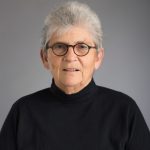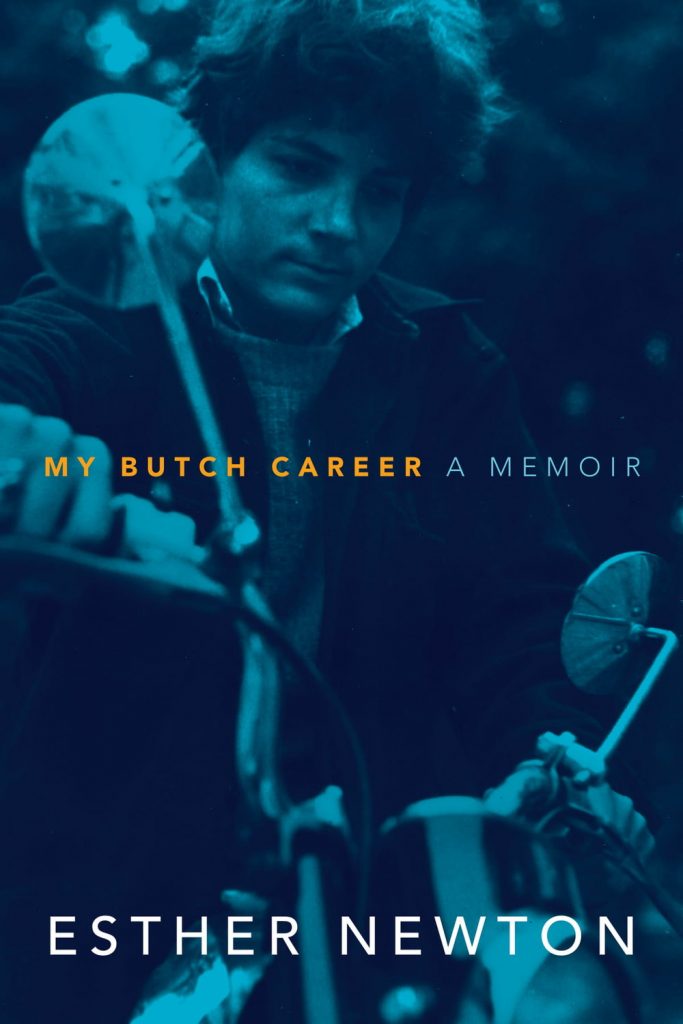Born in 1940 I, like my queer peers, lived my childhood and youth under the shadow of state sponsored anti-gay terrorism in the USA, when exposure meant ruin. My memoir lets the reader experience what that felt like, and follows my struggle, both within myself and socially to reconcile my career aspirations in scholarship with my hidden homosexuality and masculine gender expression. Later I participated in the thrilling years of Stonewall and lesbian feminism. Then, coming out professionally in 1974, I began to reaffirm my life’s work in LGBT cultural and historical studies.
NOTCHES: What drove you to relay this history from such a personal perspective?
Esther Newton: The first person pronoun has appeared, at times, in my anthropological and historical work, and I don’t believe in omniscient narrators. I love reading and writing stories but, until my memoir, most have been about other people. But alongside field notes, I kept personal journals for many years. In 1976 my best friend and I published Womenfriends, a book of our journal entries about our long friendship and lives in the feminist movement. During the same time period I spent six years in Paris and wrote a novel (unpublished) based on my journals then. I realized that memoir would be the right genre to tell the first half of my life story after giving an honorary lecture in 1996 that sketched my life and work in PowerPoint form.
NOTCHES: For historians this book speaks to histories of sex and sexuality but what other themes does it speak to?
Esther Newton: For me, sex and sexuality are part of most themes, acknowledged or not. So I would rather say that this memoir, which indeed tells of my journey toward acceptance of my lesbianism and butch expression, is wrapped up in the history of immigration into the US and its consequences, as I was the child of a white Christian mother and a Jewish father. Both my parents were communists and as an adult I was involved in the anti-Vietnam War, Gay Liberation, Feminist, and Lesbian Feminist movements. My story is equally about what it was like to be in the forefront of women’s studies and then lesbian and gay studies, the programs that became sexuality and gender studies in academia.
NOTCHES: Did you do further research for the book beyond your own experiences? Were there any particular discoveries or challenges?
Esther Newton: I did significant historical research on my mother’s female ancestors who, starting in the nineteenth century, were published writers. The Jewish side, what I call “my three fathers,” was harder to research but the histories of all my parents is a significant part of my own understanding of the milieu I was born into. It was only after the memoir’s publication that I discovered, through DNA testing, who my biological father was.
NOTCHES: Did the book shift significantly from the time you first conceptualized it?
Esther Newton: This memoir came out of a (failed) novel that itself was based on journal entries. To become a memoir the material underwent significant rewriting and cuts to make the narrative flow.
NOTCHES: How did you become interested in the history of sexuality?
Esther Newton: As a graduate student in anthropology I had no conception that sexuality could be a field of study or that it even had a history. When I did field work among drag queens (work that became Mother Camp: Female Impersonators in America) I became interested in the history of drag but could find nothing. By the early 1980s, I developed a course on the history of sexuality and was part of a network of lesbian and gay scholars like Jonathan Ned Katz, Allen Berubé, John D’Emilio, Carroll Smith Rosenberg and Estelle Freedman who were doing the research and conceptual work to create the modern field. My most significant historical contribution is Cherry Grove, Fire Island: Sixty Years in America’s First Gay and Lesbian Town.
NOTCHES: How do you see your book being most effectively used in the classroom? What would you assign it with?
Esther Newton: It can be used effectively to personalize courses on twentieth-century American history, in intros to sexuality and gender studies, for graduate students in anthropology or history, and for classes on memoir writing.
NOTCHES: Why does this history matter today?
Esther Newton: “The past is never dead, it is not even past,” wrote Faulkner. Without an understanding of history, where we came from, how can people understand our present day situations and challenges?
NOTCHES: Your book is published, what next?
Esther Newton: A documentary about my life and work by filmmaker Jean Carlomusto will be finished in 2021. You can check out photographs and clips from the film on the Facebook page Esther Newton Made Me Gay

Esther Newton is a founder of and leading scholar in LGBTQ studies. She has taught at Purchase College of the State University of New York, the University of Paris VII, Paris, France and the University of Michigan (Ann Arbor). She was active in Second Wave Feminism, Gay Liberation and the Lesbian/Feminist movements. Her work has been translated into French, Spanish, Hebrew, Polish and Slovak.

NOTCHES: (re)marks on the history of sexuality is licensed under a Creative Commons Attribution-NonCommercial-NoDerivatives 4.0 International License.
Based on a work at www.notchesblog.com.
For permission to publish any NOTCHES post in whole or in part please contact the editors at NotchesBlog@gmail.com





